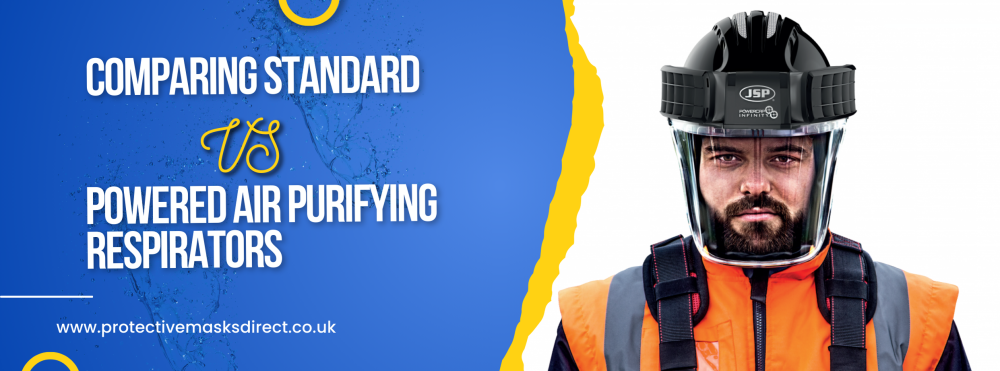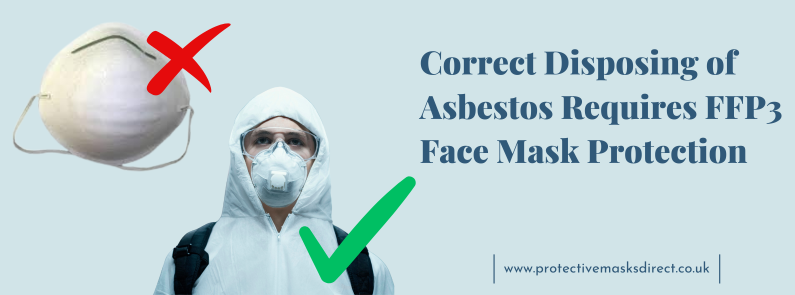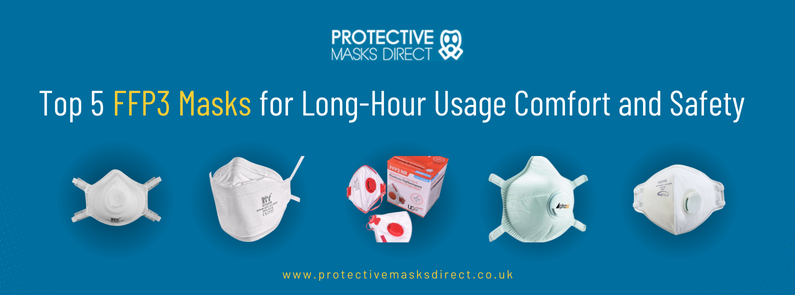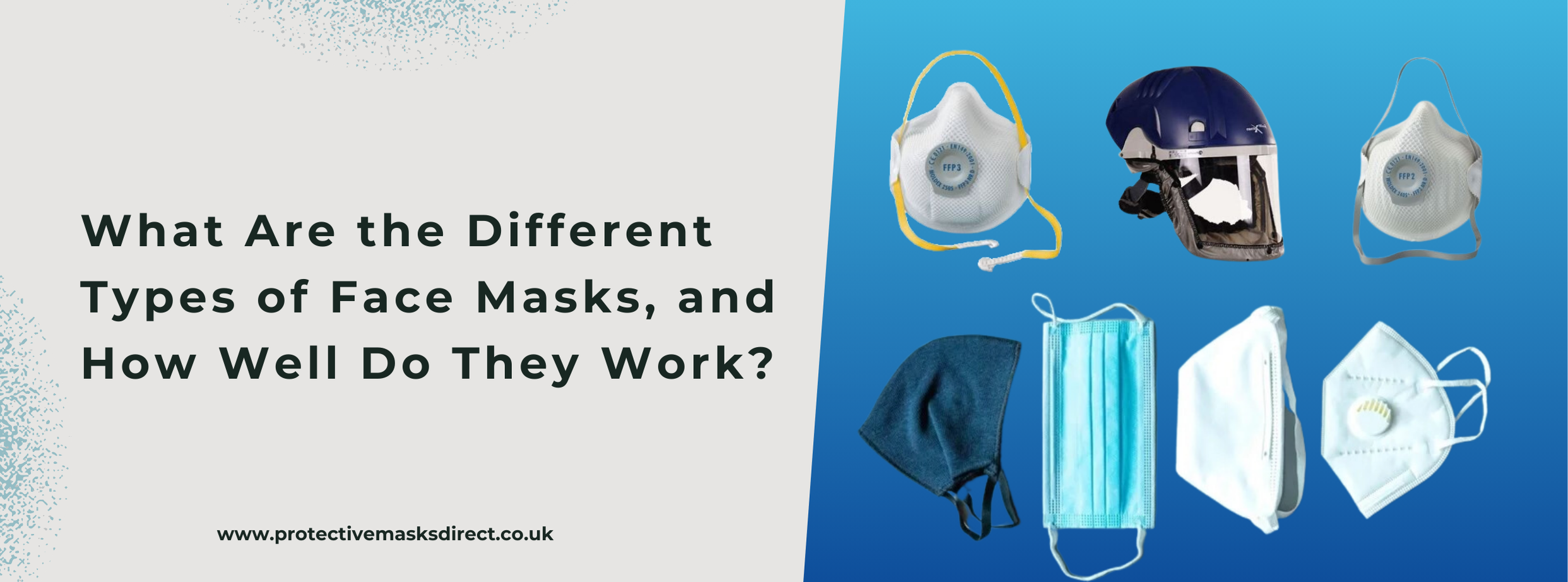
When working in environments where air quality is poor, it becomes important to ensure that you use the correct respiratory protection. Respirators protect users against dangerous dust, gases, vapors, and pathogenic organisms by filtering them out of the breathing air. Two primary types of air-purifying respirators dominate the market: Standard Air Purifying Respirators (APRs) and Powered Air Purifying Respirators (PAPRs).
Each has its benefits and uses, yet the choice between them depends on the situation, personal preferences, and the degree of protection necessary. In this article, we’ll explore the differences between a standard and air-purifying powered respirator to help you make an informed decision.
Introduction to Respiratory Protection
Respiratory protective devices are key in the management of health and safety in workplaces that experience exposure to airborne hazards. From construction dust or infective aerosols in healthcare settings, respirators offer a shield against contaminants.
APRs and PAPRs are intended to filter out dangerous dust, fumes, and gases in the air and to provide a healthy breathing environment. The differences between a powered respirator and a standard model affect every aspect of the device, including user comfort and protection.
Mechanism of Action: How Each System Works
The main difference between APRs and PAPRs is in their functionality.
Standard Air Purifying Respirators
Standard APRs depend on the user’s lungs to pull air through filters. These respirators include half-face and full-face masks that are tight-fitting and come over the face of the wearer applying breathing efforts. The filters prevent the particles and other contaminants from entering the respiratory system to harm the lungs.
Although the conventional APRs are quite efficient in most applications, the basic systems are usually manually operated and can prove to be tiring after extended utilization in risky or physically straining operations. There are also limits to the length of time the units can be worn without the need for the user to take a break.
Powered Air Purifying Respirators
PAPRs, on the other hand, come with an air-fed respirator that works through the use of a blower that draws air through filters. This system provides a constant flow of fresh and clean air to the facepiece or hood minimizing the amount of work the wearer has to do to breathe. The pressure inside the facepiece or powered respirator hood is positive and this makes certain that the contaminants are kept out even if there are small pin holes. This feature makes PAPRs ideal when used for a longer duration since they are lighter and cause less strain.
Levels of Protection: Standard vs. Powered Respirators
While APRs and PAPRs are used interchangeably to offer protection, their protection depends on assigned protection factors (APFs).
Standard APRs
Standard respirators come in different protection levels due to the mask type as well as the quality of the filter. For instance, half-face respirators are generally rated at an APF of 10 and depending on filter APF 20 while full-face respirators give an APF of 20. The efficiency of these respirators greatly relies on the seal around the face being made correctly. Sealing is important and fit testing is mandatory to make sure that there are no leaks that will affect the protection.
PAPRs
PAPRs typically provide higher APFs, ranging from 25 to 40, depending on the configuration and the filter in use. The positive pressure created by the blower eliminates the need for regular fit tests. These are the only protective masks recommended by the HSE for users with facial hair or beards. This makes PAPRs to be used where maximum protection is needed such as in chemical manufacturing or when dealing with infected aerosols.
Comfort and Usability: A Key Differentiator
One of the considerations is the level of comfort since people may be required to wear respirators for several hours. Specifically, the design and the airflow mechanism of PAPRs and standard APRs result in differences in the user experience.
Standard APRs
Because APRs are generally hand-operated, users develop discomfort after some time if the air resistance through the filters is high. This can be especially observed in those tasks that involve constant physical exertion. The necessity of a perfect seal also leads to problems with pressure points and skin irritation, which decreases its durability for everyday use. Users must ensure that they are clean shaven everyday to ensure that a good seal is created. If this does not occur the protective mask will not be properly sealed and therefore not protect correctly.
PAPRs
PAPRs remove the breathing resistance and come with an active airflow to cool the mask or hood. This increased comfort makes them suitable for use during long shifts or in hot conditions. Furthermore, PAPRs with powered respirator hoods offer full head protection without the necessity of a tight facial seal and thus there are no pressure points on the face.
Applications and Use Cases: Where Each Excels
The right choice of a standard APR and PAPR varies depending on the line of work or a particular sector.
Standard APRs
This type of respirator is usually employed in places where there is moderate exposure to toxic material. They are useful in preventing the entry of dust, particulates, and gases in the construction, manufacturing, and painting industries. For instance:
- Construction: Protection from dust, asbestos, and other dangerous chemical vapors.
- Healthcare: Preventing contact with aerosols in ordinary environments.
- Manufacturing: Protection against industrial dust and other chemicals.
PAPRs
PAPRs or powered respirators are used where contamination levels are high or usage is likely to be more than occasional. They are particularly beneficial in settings like:
- Healthcare: Ideal for procedures with high aerosol exposure risks, such as during pandemics.
- Chemical Processing: Protection against toxic gases and chemicals.
- Pharmaceutical Manufacturing: Ensuring contamination control in sterile environments.
- Emergency Response: Handling hazardous materials in critical situations.
Maintenance and Cost Considerations
While both APRs and PAPRs need maintenance, the process may vary and might be costly.
Standard APRs
APRs are comparatively cheaper with lower initial capital investments. Maintenance comprises filter replacement and examinations to ascertain that the facepiece has an appropriate fit. The general form also implies fewer components that may be problematic and hence easier to oversee.
PAPRs
PAPRs are relatively expensive to buy due to the higher level of technology used and other components such as blowers and batteries. Other formalities comprise battery charging replacement blower operation and filter replacement. However, the money spent on PAPRs can be explained by the fact that they are more comfortable and effective in environments where the risk of infection is higher. After the initial outlay over the longer term they will work out as a far more cost effective purchase when compared to tight fitting masks due to the extended life of the filters and no need for expensive face fit testing.
Which one will you choose?
The primary consideration when deciding between a SAR and a PAPR is the requirements of a particular workplace. Standard APRs give good protection in low to moderate exposure situations, but PAPRs are more comfortable, protected, and usable in high-risk or long-term use.
In this way, knowing the distinctions in the performance of these systems, their protection, and their application, you will be able to choose a respirator that will correspond to your safety needs.
Whether you require a half-face respirator for general application or a full-protection battery-powered air-fed mask for risky operations, operatives with facial hair or where the mask requires being worn for extended periods, being aware of the advantages and disadvantages of the two will help to achieve the best protection.




